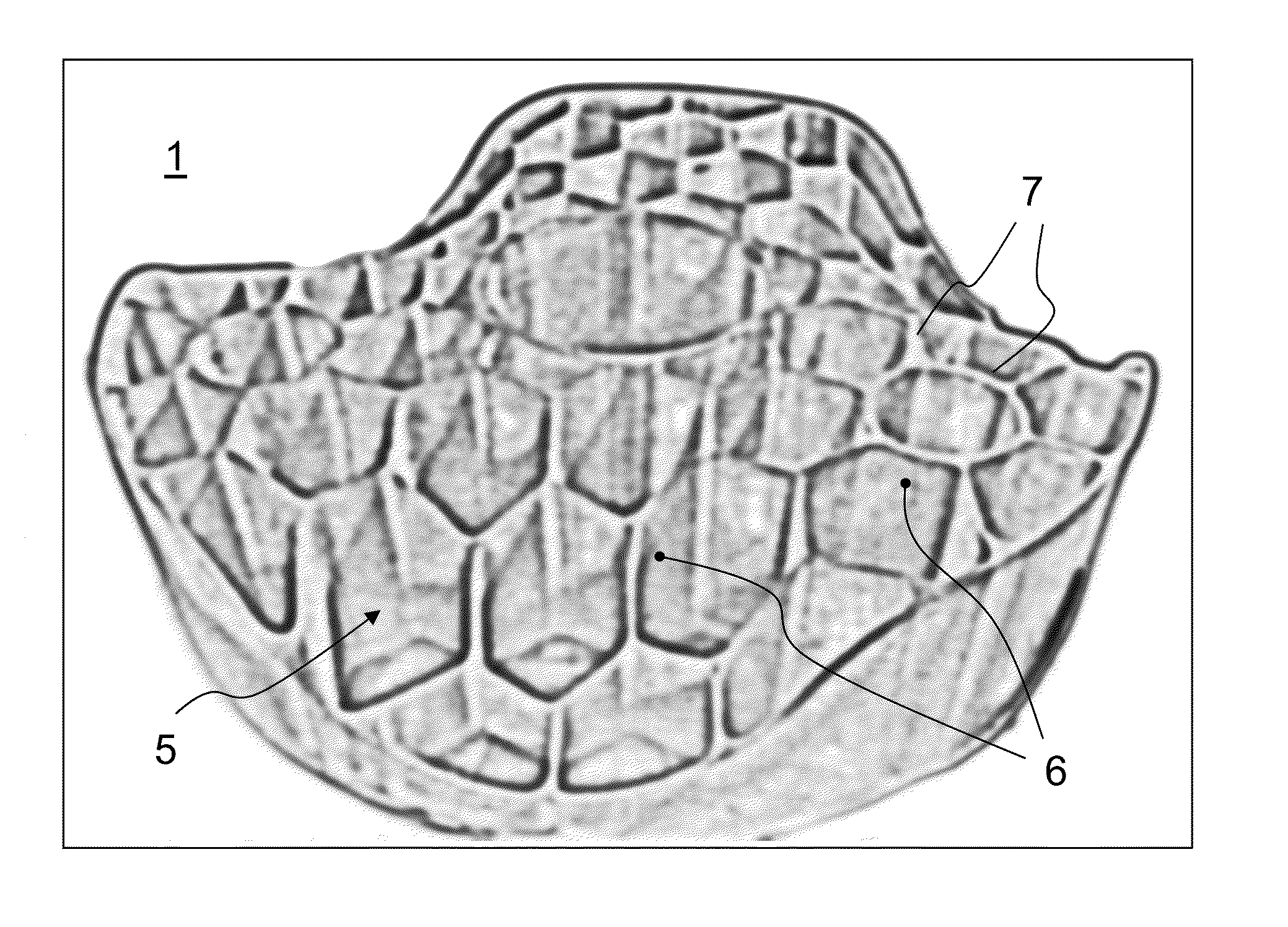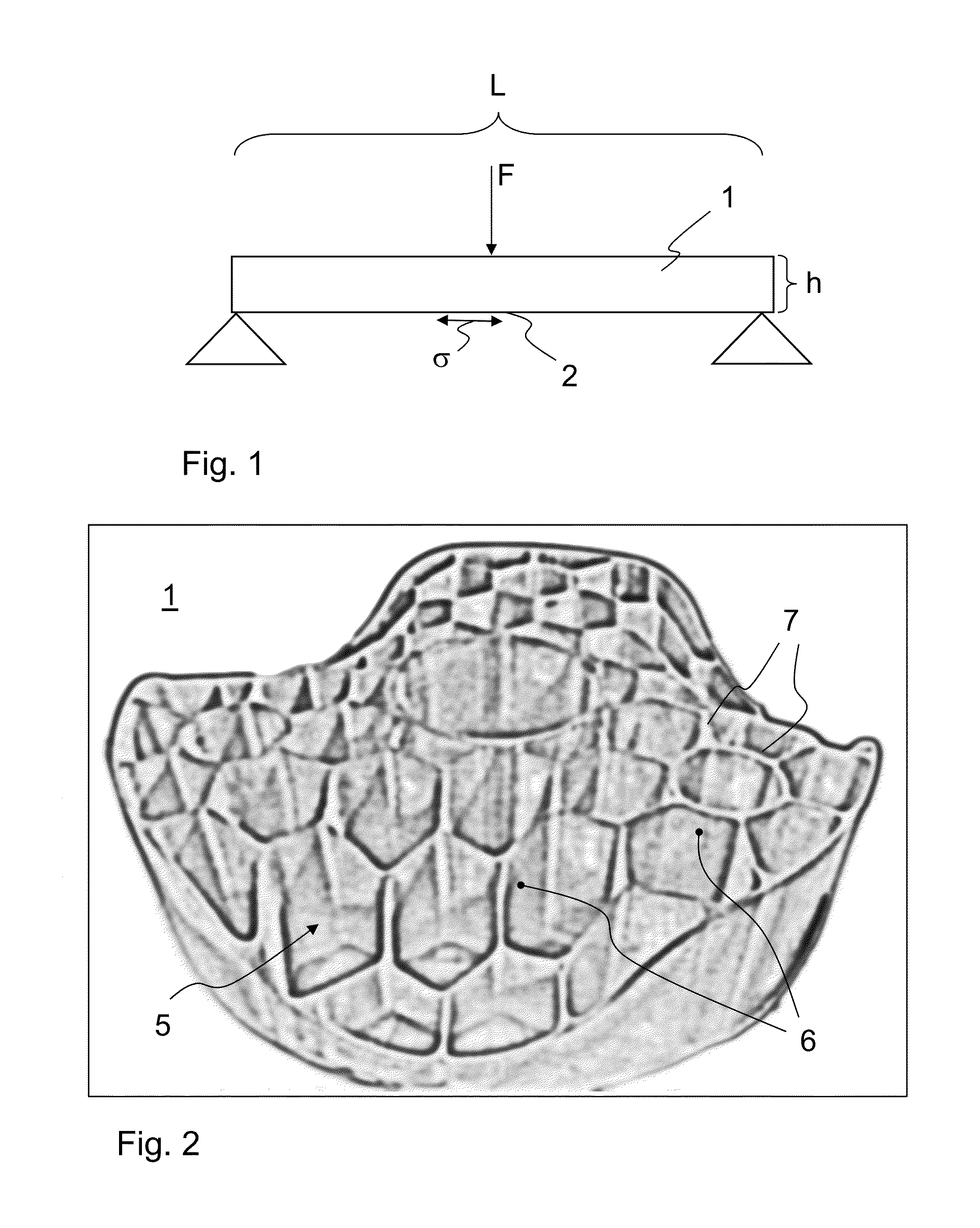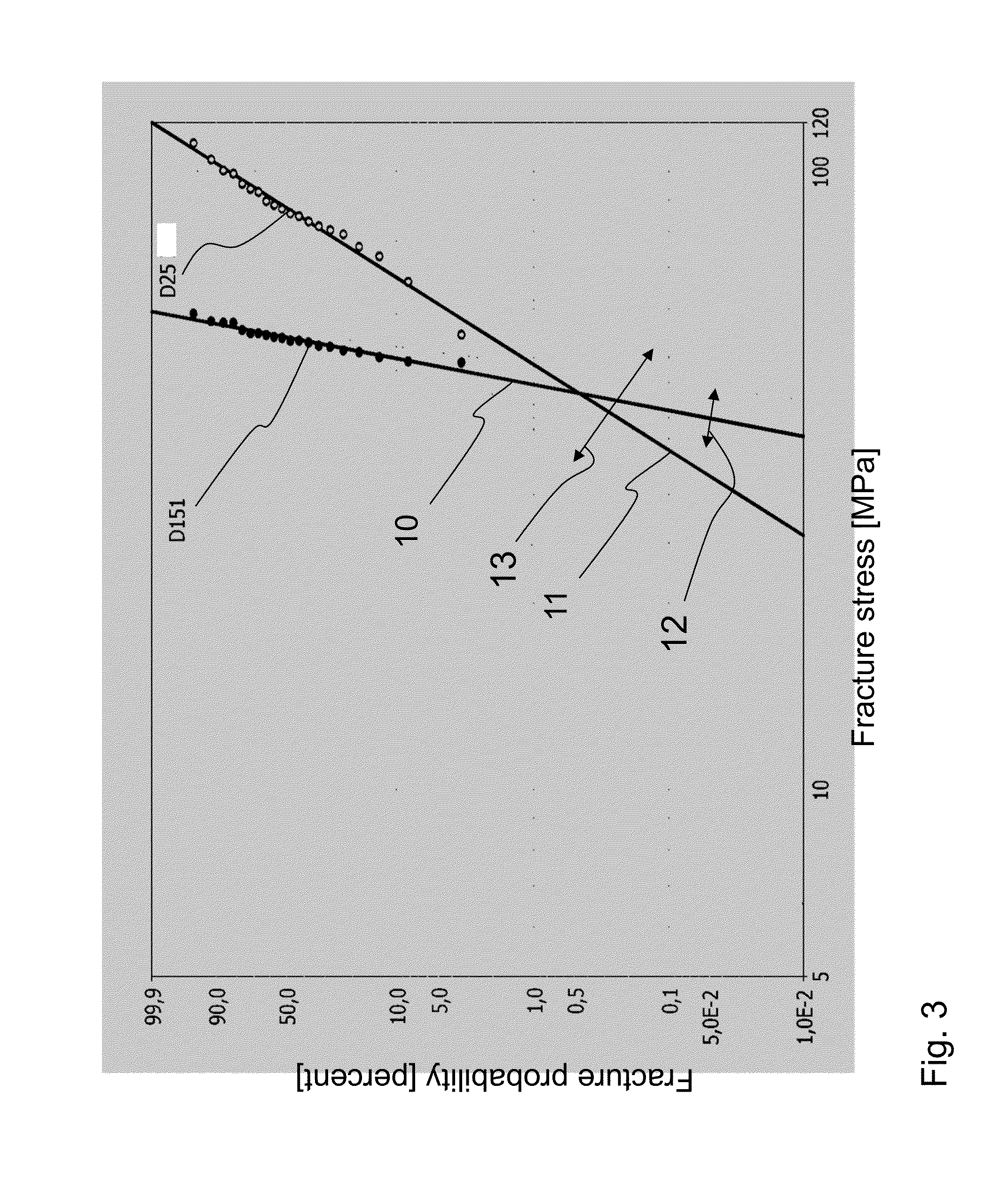Method for specifying fracture resistance of mechanically stressed glass or glass ceramic
a technology of mechanical stress and fracture resistance, applied in the direction of material strength using steady bending force, instruments, manufacturing tools, etc., can solve the problems of reducing the mechanical stress limit by two orders of magnitude, unable to reliably determine the long-term stability of materials, and requiring high reliability. , to achieve the effect of substantial weight savings
- Summary
- Abstract
- Description
- Claims
- Application Information
AI Technical Summary
Benefits of technology
Problems solved by technology
Method used
Image
Examples
Embodiment Construction
[0033]Referring to FIG. 1, one exemplary embodiment will be explained of how a value for the required mechanical strength may be determined when dimensioning the component, expressed as the maximum tensile stress occurring in the glass or glass ceramic material based on the mechanical stress occurring during use of the component.
[0034]The glass or glass ceramic component 1 in this exemplary embodiment is a carrier which is supported at both ends thereof. In this embodiment, the carrier is exposed to a force F at the center thereof. This causes a tensile stress σ at a surface 2 of the carrier, due to this mechanical load and associated deflection. In the ideal case, the resulting compressive stress at the other surface has the same magnitude. Since the tensile stress is more critical for the strength of glass or glass ceramic components, only this tensile stress will be considered below.
[0035]The following applies to the maximum tensile stress □max occurring at the central extreme fi...
PUM
| Property | Measurement | Unit |
|---|---|---|
| grain size | aaaaa | aaaaa |
| grain size | aaaaa | aaaaa |
| tensile stress | aaaaa | aaaaa |
Abstract
Description
Claims
Application Information
 Login to View More
Login to View More - R&D
- Intellectual Property
- Life Sciences
- Materials
- Tech Scout
- Unparalleled Data Quality
- Higher Quality Content
- 60% Fewer Hallucinations
Browse by: Latest US Patents, China's latest patents, Technical Efficacy Thesaurus, Application Domain, Technology Topic, Popular Technical Reports.
© 2025 PatSnap. All rights reserved.Legal|Privacy policy|Modern Slavery Act Transparency Statement|Sitemap|About US| Contact US: help@patsnap.com



